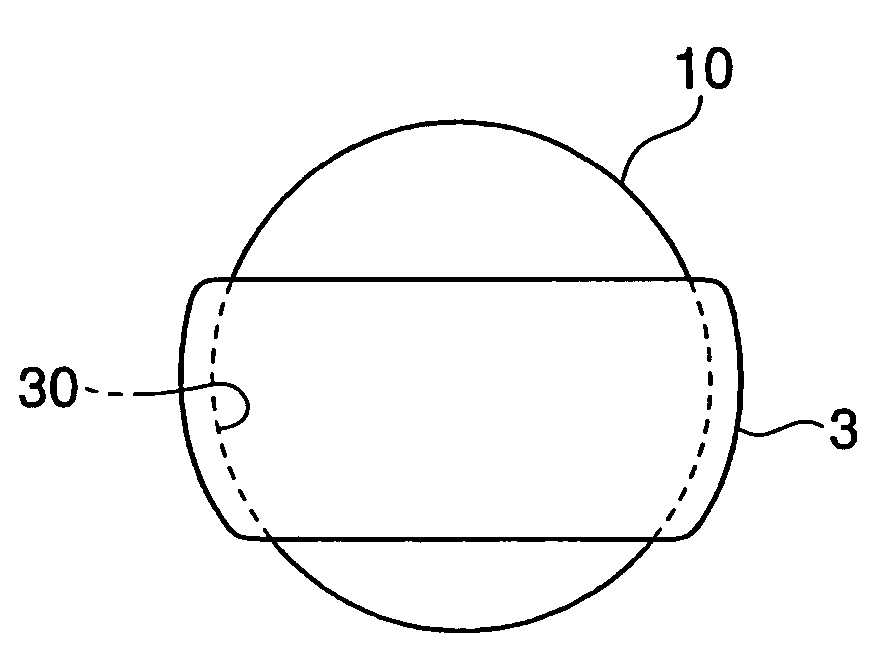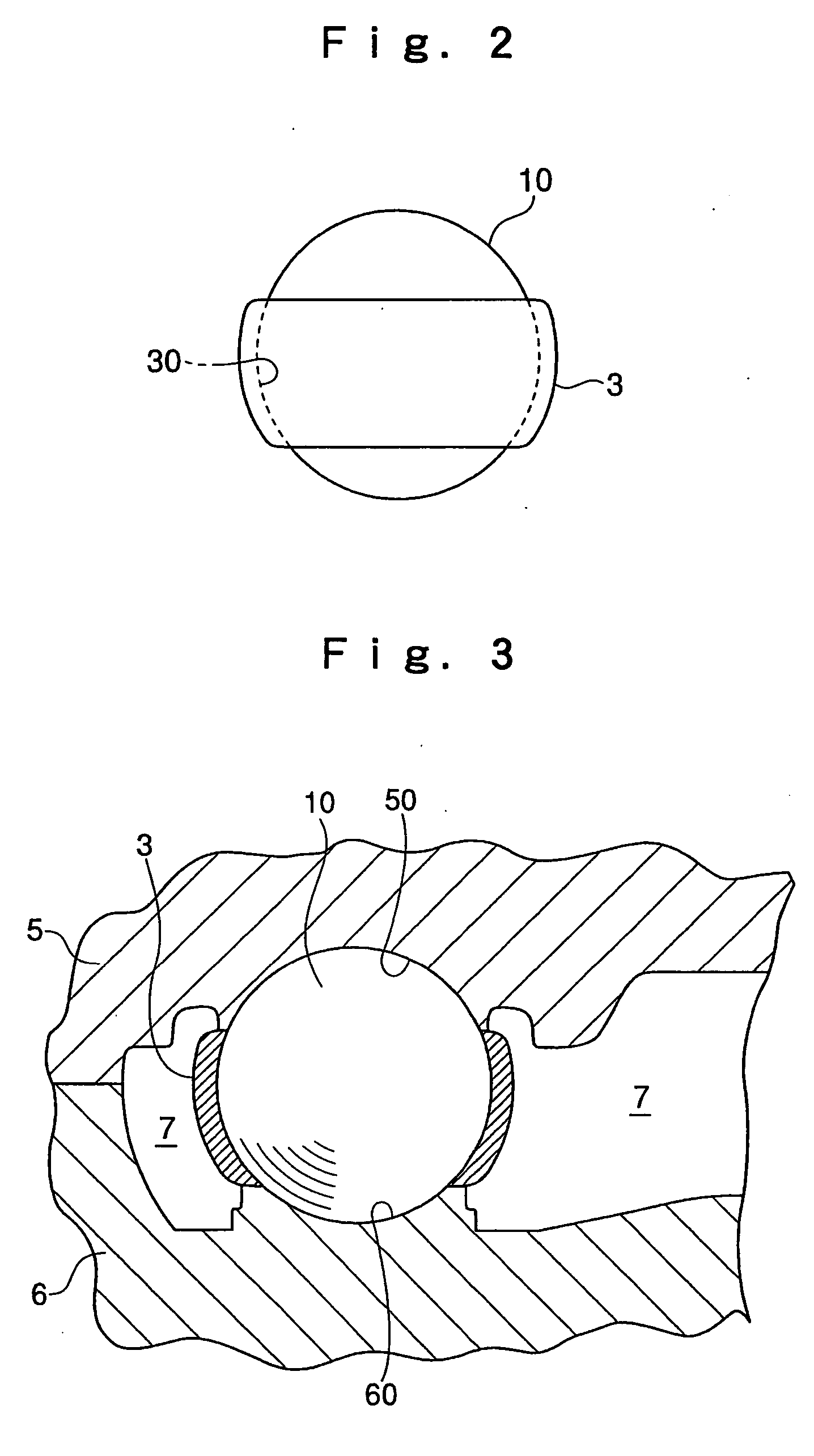Method of manufacturing a spherical bearing
- Summary
- Abstract
- Description
- Claims
- Application Information
AI Technical Summary
Benefits of technology
Problems solved by technology
Method used
Image
Examples
first embodiment
[0032]FIG. 1 shows a spherical bearing to which the present invention is applied. This spherical bearing is composed of a ball shank 1 constituting an inside member with a ball portion at the distal end thereof, and a holder 2 constituting an outside member having a ball support portion 20 enclosing a ball portion 10 of the ball shank 1, with the ball shank 1 and the holder 2 being connected to each other swingably or rotatably.
[0033] The ball shank 1 is formed by welding a bar-like shank 11 to a bearing steel ball of high sphericity constituting the ball portion 10, and at the bottom of the shank 11, there is formed a hexagonal bearing surface 12 for securing a member to be mounted such as a link. Further, a male screw 13 is formed on the distal end portion of the shank 11, and by threadedly engaging a nut with this male screw 13, the member to be mounted can be held and secured between the nut and the hexagonal bearing surface 12.
[0034] On the other hand, the holder 2 is equippe...
second embodiment
[0053] Next, FIG. 8 is a sectional view of aspherical bearing according the second embodiment manufactured by the method of the present invention.
[0054] This spherical bearing is composed of an outer ring 101 constituting the outside member, an inner ring 102 constituting the inside member, and a resin liner 103 provided between the inner ring 102 and the outer ring 101, in which the inner ring 102 can freely make a swinging movement or a rotating movement relative to the resin liner 103 held by the outer ring 101. The inner ring 102 is formed in an annular configuration with a through-hole 105 into which a rod 104 of a link mechanism is to be inserted, with its outer peripheral surface 106 being finished as a convex spherical surface in slide contact with the resin liner 103. As the material of the resin liner, the same polyether ether ketone as used in the first embodiment was used, and the thickness thereof was 1.0 mm.
[0055] The manufacturing method for the spherical bearing of ...
PUM
| Property | Measurement | Unit |
|---|---|---|
| Temperature | aaaaa | aaaaa |
| Force | aaaaa | aaaaa |
| Frequency | aaaaa | aaaaa |
Abstract
Description
Claims
Application Information
 Login to View More
Login to View More - R&D
- Intellectual Property
- Life Sciences
- Materials
- Tech Scout
- Unparalleled Data Quality
- Higher Quality Content
- 60% Fewer Hallucinations
Browse by: Latest US Patents, China's latest patents, Technical Efficacy Thesaurus, Application Domain, Technology Topic, Popular Technical Reports.
© 2025 PatSnap. All rights reserved.Legal|Privacy policy|Modern Slavery Act Transparency Statement|Sitemap|About US| Contact US: help@patsnap.com



